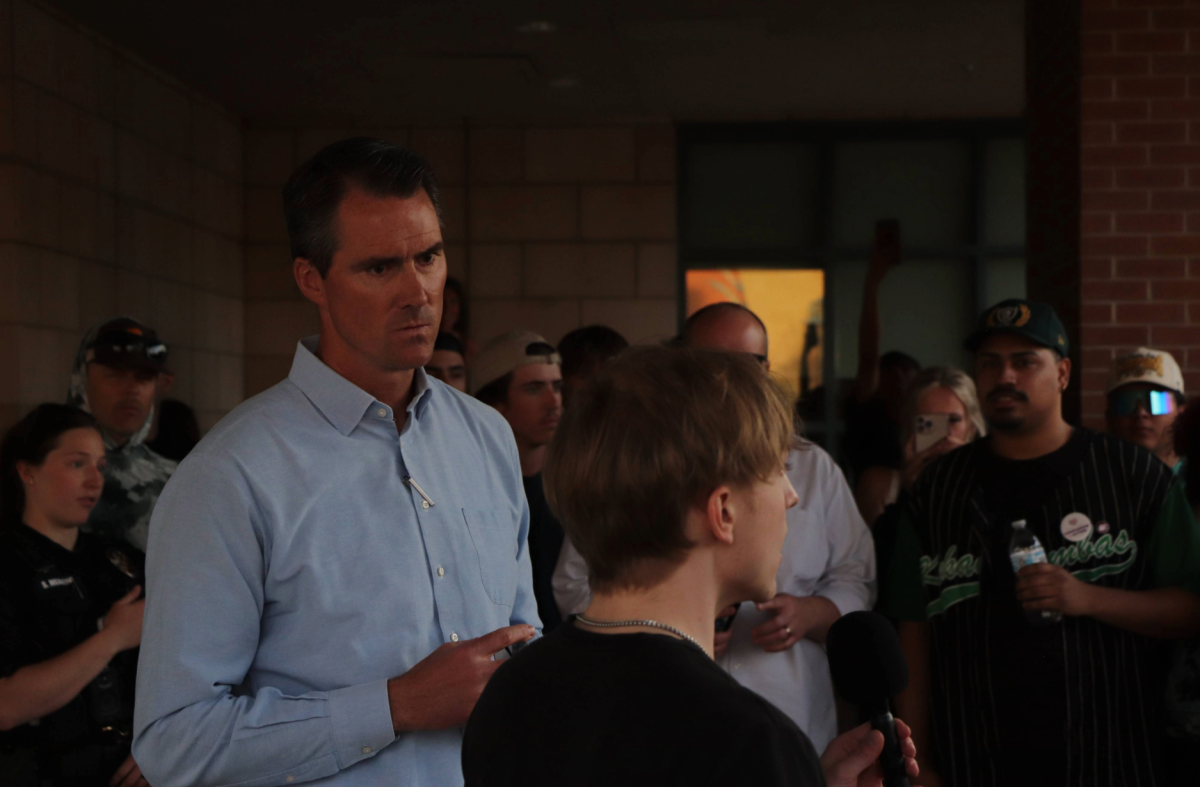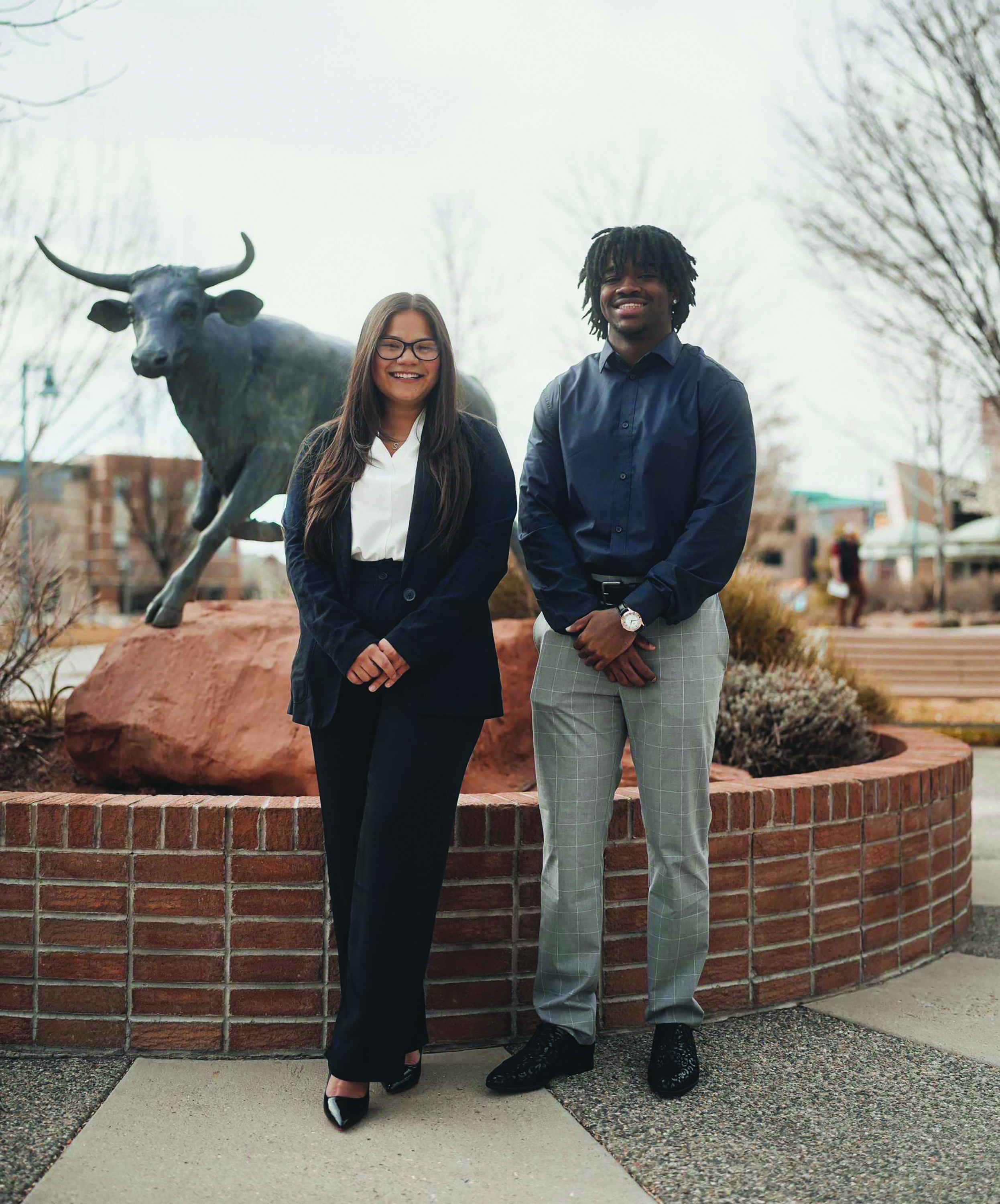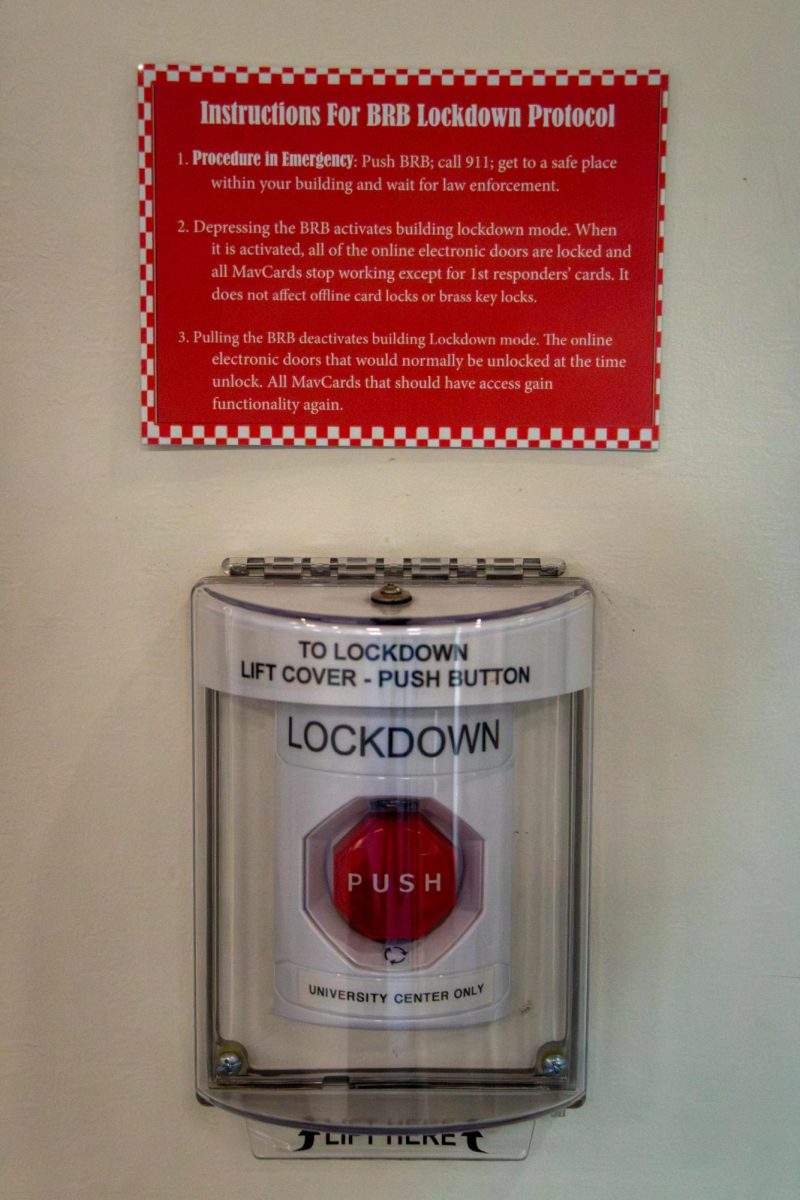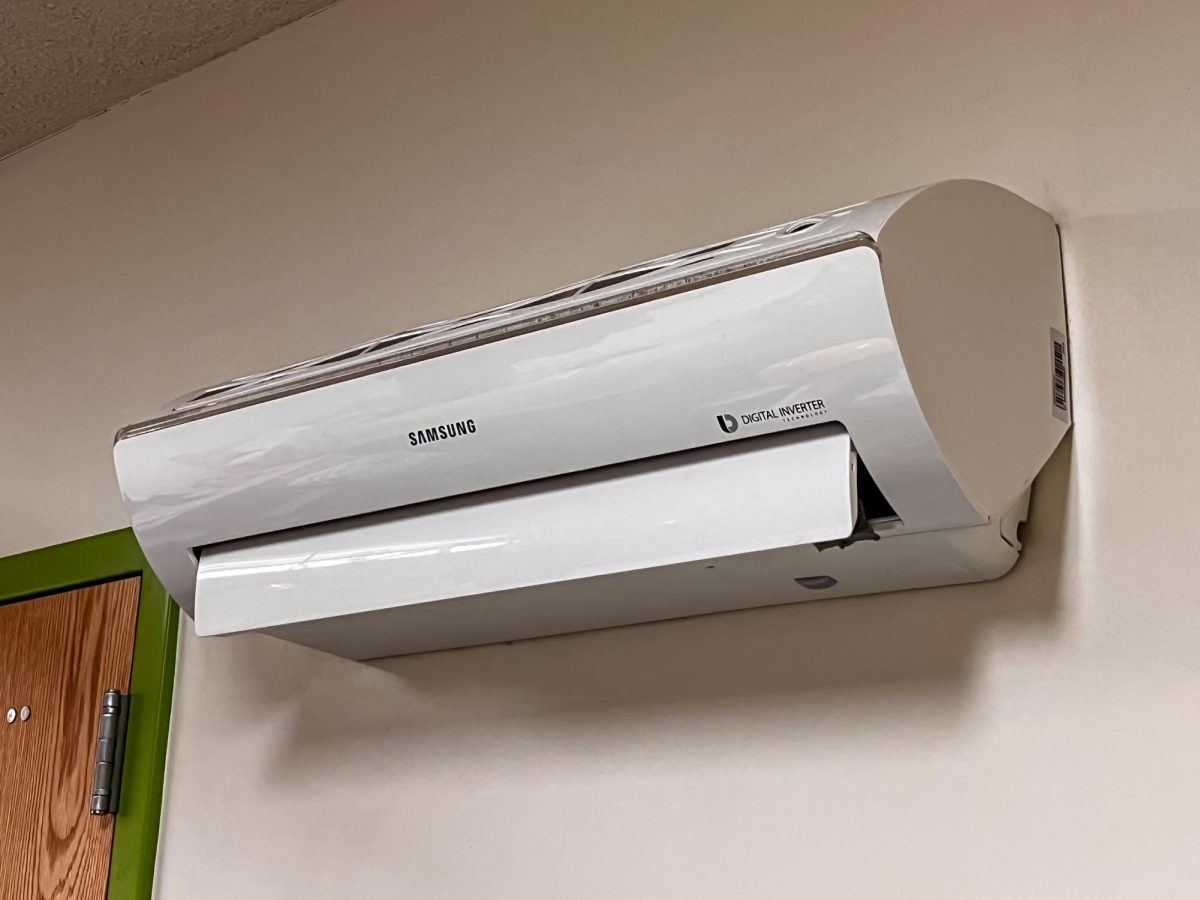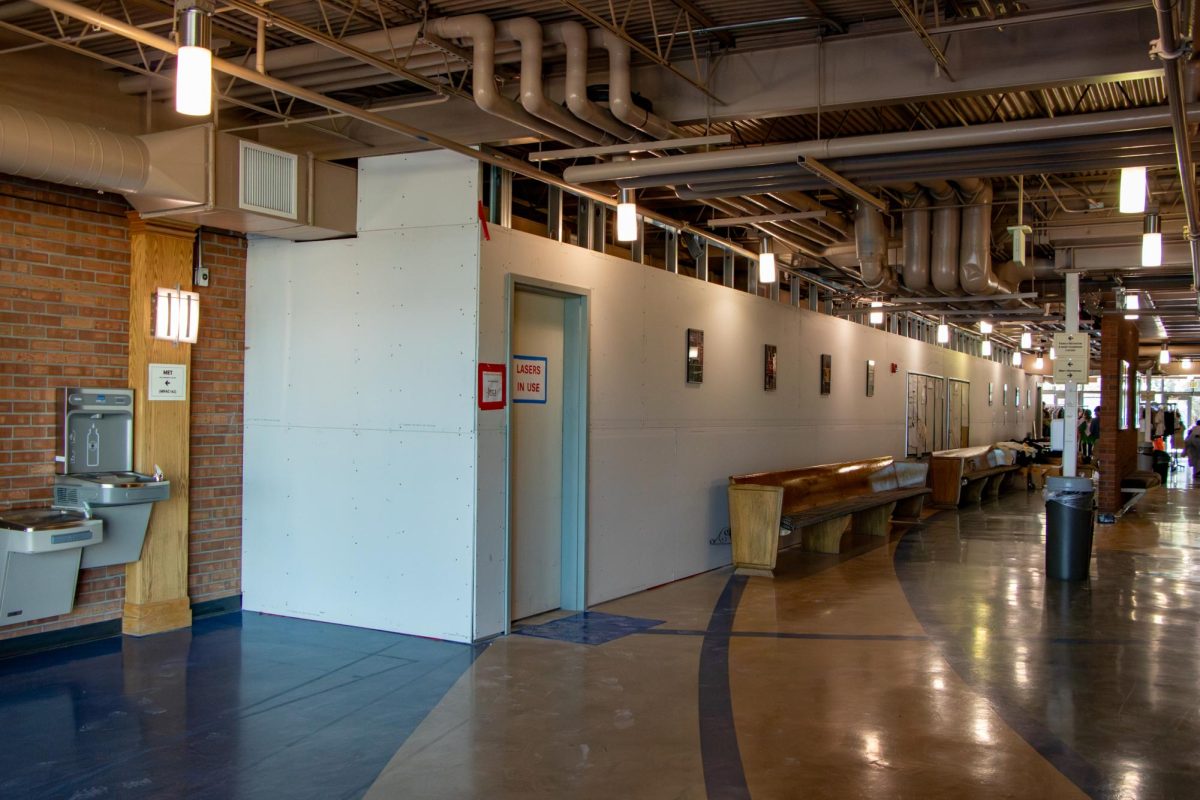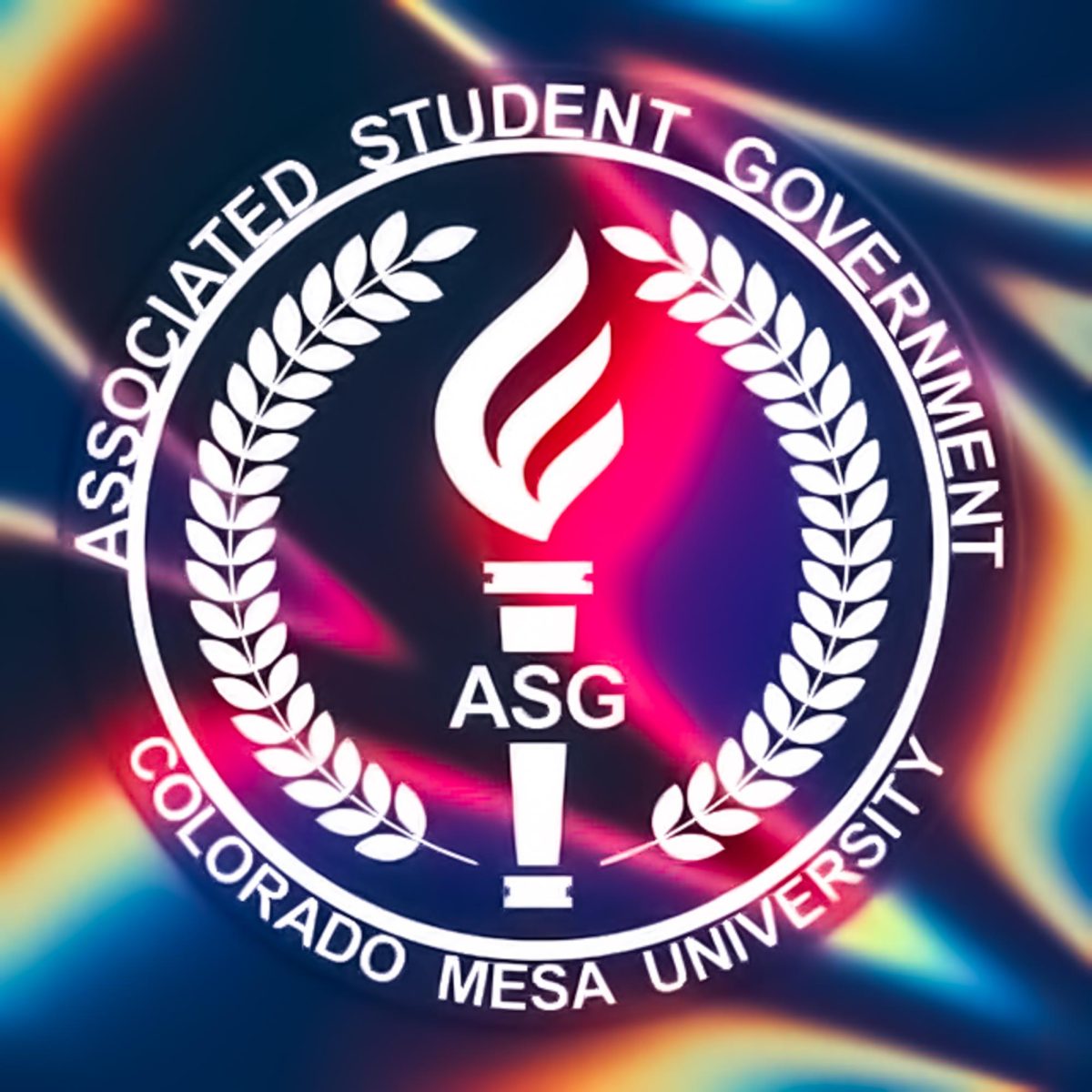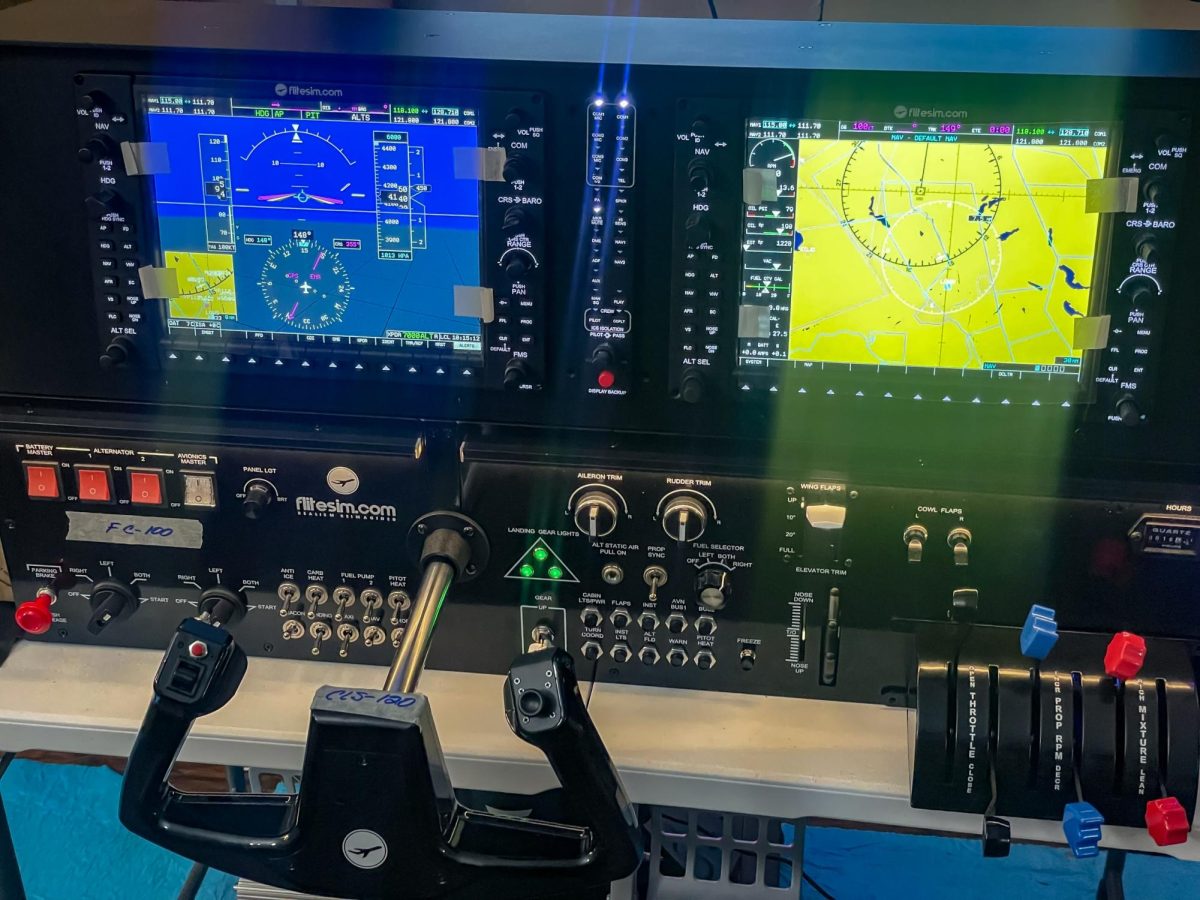On the night of Confluence Hall’s grand opening, as the sun slipped behind the Monument, a Colorado Mesa University senior engineering student made his way past the crowd of attendees on the first floor with a paper banner rolled and tucked under his arm.
Engineering students, administration officials from the University of Colorado and CMU and politicians such as Rep. Scott Tipton socialized as the student climbed the stairs to the third floor.
“I put on a brimmed-hat while I was walking up,” the student said, who spoke on the condition of anonymity due to the possible repercussions for his actions. “And I think I walked by a couple cameras; they could find out who did it.”
Nonetheless, he kept his head low as he reached the hatch, which he says was unlocked, to the building’s roof.
“Just because I wasn’t sure if anyone would get mad; I was nervous when I was hanging it,” he said.
The student said he then took the 25-foot-long banner and taped it to hang over the side of the brand-new building.
“I was watching people walk below as I was putting it up and a couple people looked up,” he said. “People were laughing.”
The banner, which stated in black spray-painted block letters “KOKOPELLI 4EVER,” with the relevant Kokopelli illustrations, blew in the January breeze facing 7th Street. The next day, Jan. 25, it reportedly blew back onto the building and was likely collected by CMU facilities.
However, according to its creator, the banner represented more than a building, a Native American deity or even a scrapped election.
He wanted the banner to serve as a reminder.
“In a way, the whole thing was a reminder to everyone to not take things too seriously,” he said. “The entire story is fun to watch play out.”
CMU administration is taking its response in a similar way.
“At end of the day, if some college students drop a banner, I’m not going to be too unnerved by that,” CMU Vice President for Student Services John Marshall said.
Marshall wanted to express that while this could be a serious incident, his office faces issues that warrant more concern.
Quite simply, camera footage probably won’t be reviewed.
Kokopelli was the original name for Confluence Hall before it was scrapped due to alleged election hacking.
The prankster says it was certainly manipulated, but not by him.
Back in October, CMU said Kokopelli won by a suspiciously wide margin relative to CMU standards, 1,663 votes. For comparison, only 784 students participated in last year’s student government election. The second most voted name was “Redlands Hall,” which received 583 votes.
While this student says he hung the banner, he claims he is not the “hacker,” a term he uses lightly because he does not consider the act “hacking.” Nonetheless, he knows the involved party, but they were not willing to speak.
“It was considered, the fact that we were messing with a vote,” the banner-hanger said. “But, this isn’t voting for a president, it’s a building name.”
In an email in October, Foster said the results “might have involved some innovative voting behaviors, that could have influenced the outcome.”
The vote was originally offered on SurveyMonkey, instead of OrgSync which may have offered more security, in hopes to receive alumni votes along with current students and staff.
After another failed election attempt, which supposedly used stricter security, the school picked the name “Confluence Hall.”
The prankster said the engineering department, which he said started floating the Kokopelli name originally, was not impressed by the new name.
Foster explained in a school-wide email the name represented the partnership with CU, the partnership with the McConnell Math & Science Museum and the obvious reference to Grand Junction’s naming “because it is located at the junction or confluence of the Colorado and Gunnison rivers.”
Despite two manipulated elections, the prankster is a little sour that they didn’t get an opportunity to vote in a clean way.
“Personally, I’m sort of disappointed they just didn’t hold it normally, because they could have had a legit vote,” he said.
Previous building elections were held on OrgSync, which should defend against the algorithm used by the “hacker,” because it requires your 700 number.
While CMU spokesperson Dana Nunn did not want to speculate motive for the alleged rigging back in October, the iPads being offered as prizes for the winning name may have been enough incentive.
The student seemed to consider this motive laughable.
“Nobody cared about the iPad,” he said.
What he did care about, and what he hoped the banner would represent, would be a senior class’ legacy.
“After the grueling engineering program, everyone’s kind of sour about getting to spend only one semester in the new building,” he said. “And the idea of leaving a legacy for our class—I like the idea of leaving a mark.”



